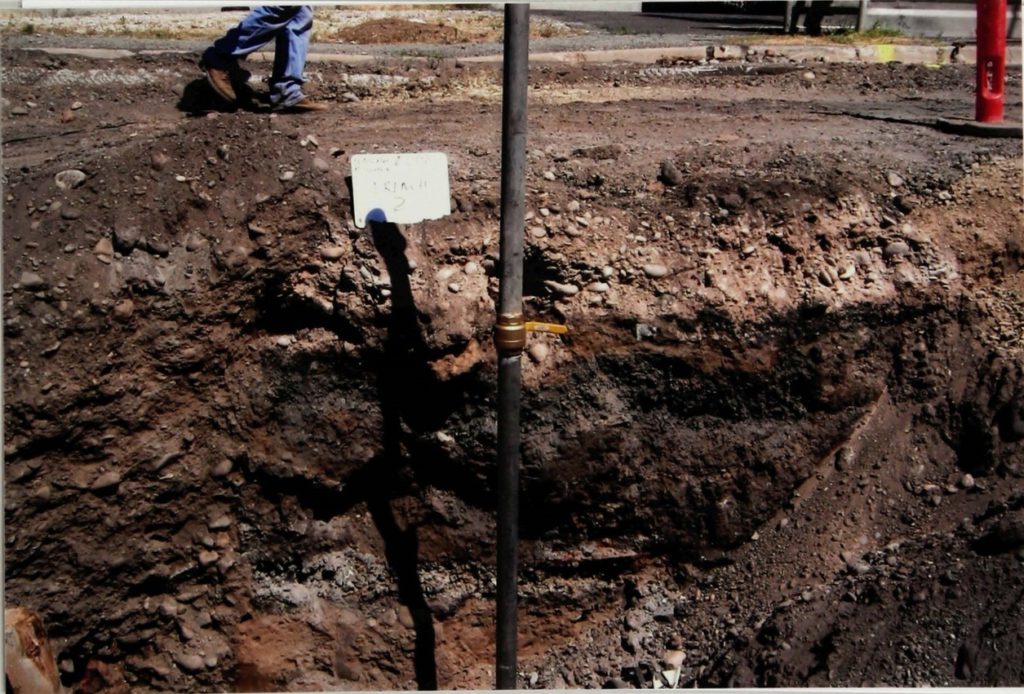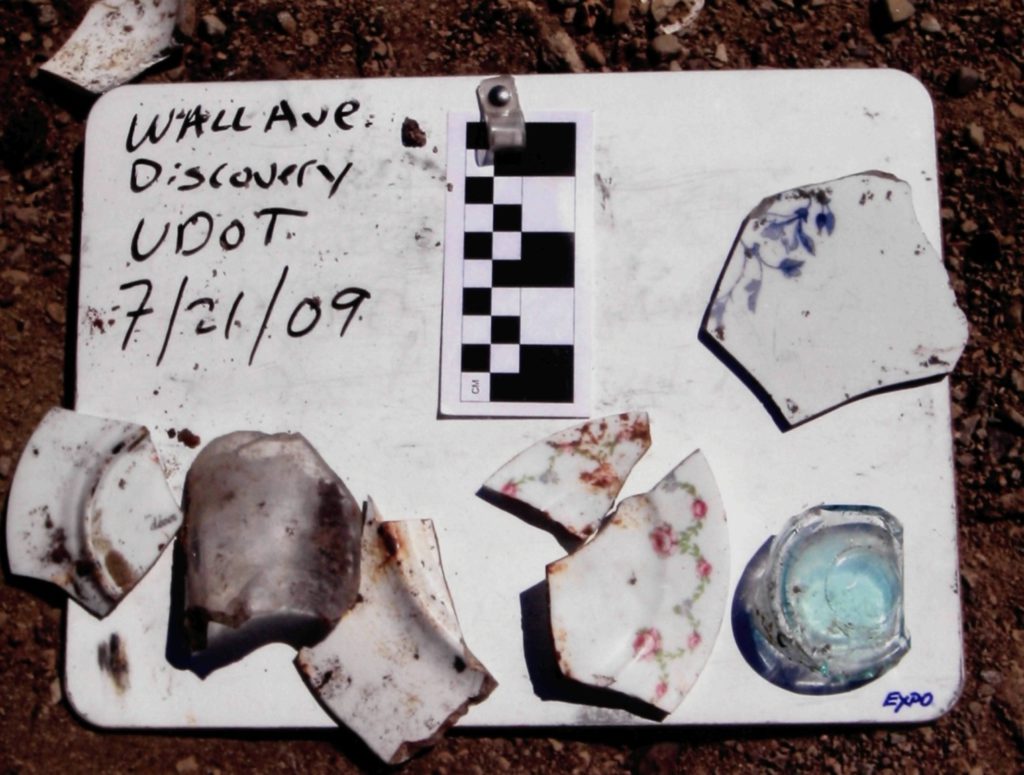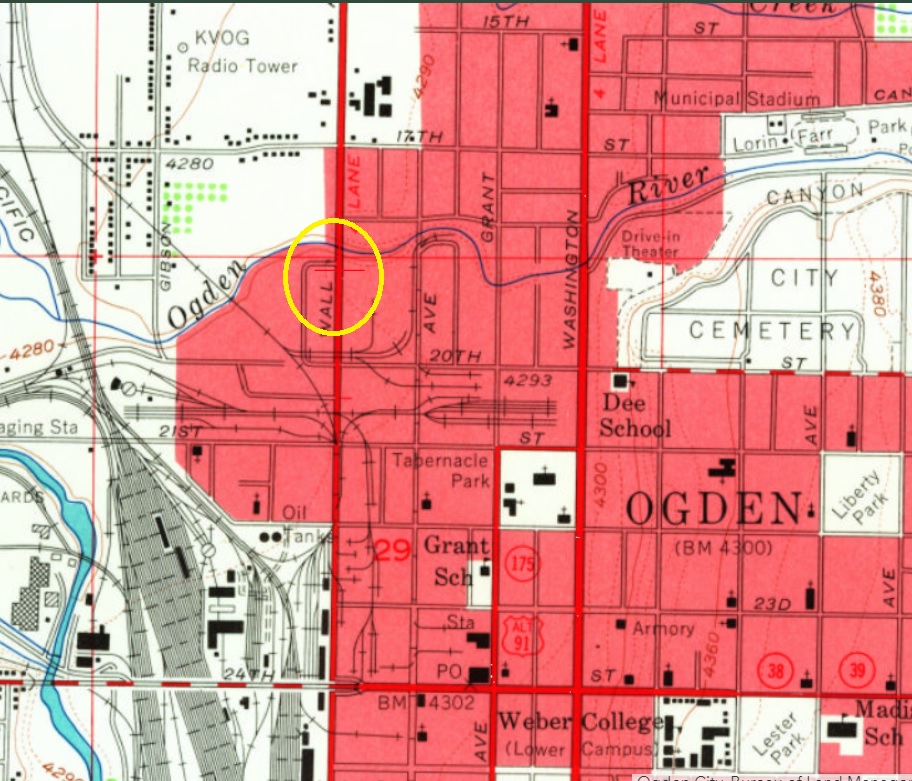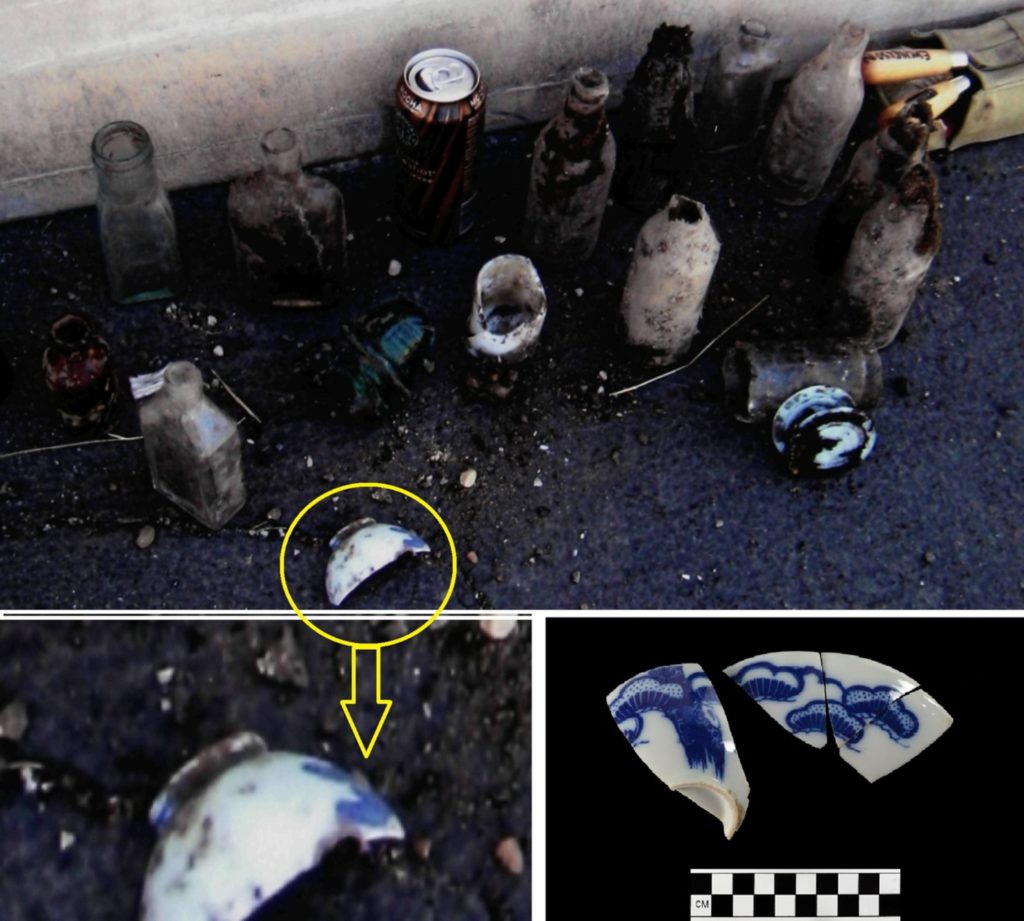Christopher W. Merritt, Utah State Historic Preservation Officer

Imagine your life without landfills, dumpsters, and collection services: where would all your trash go? How would you get it out of your house, your street, and your community?
While conducting utility trenching across Wall Avenue near 20th Avenue in Ogden in 2009, construction crews encountered a dense layer of historic artifacts, black petroleum and coal-stained soils. But this wasn’t just any trash dump, and it is giving archaeologists a glimpse into how humans have interacted with garbage over the years.
The discovery was made within the Utah Department of Transportation (UDOT) right-of-way, just 150’ north of the Ogden River. It wasn’t so much a surprise that something of this kind was discovered, but the density of material was impressive and UDOT contracted SWCA Environmental Consultants to come out and record the discovery and analyze a portion of the encountered materials.

What Did Archaeologists Find?
According to archaeologists Ellen Smith and Scott Whitesides, the trash deposits measured from 6 inches to 2 feet thick in places, and contained a mixture of residential, commercial and even industrial artifacts from the 1880s-1920s. Archaeologists discovered several types of decorative earthenware of European and American manufacture, medicine bottles, cosmetic jar, alcohol and food bottles, a small gauge railroad spike, a piece of concrete with decorative tile (likely from a building demolition), and even an intact socia bottle from “Becker Products”, the local Ogden brewery and bottler (and located half a block to the east of the discovery site). All of these items dated to a roughly 40-year period, at the peak of Ogden’s booming railroad industry, but why was it dumped in the road?
Archaeological Interpretation of the Wall Ave Dump
Archaeologists started by looking through the historic topographic maps of the area. This 1955 map (below) shows that the area where the discovery was located is in the floodplain of the Ogden River, and near a series of Oregon Short Line Railroad spurs servicing large businesses such as the Becker Brewing Company. As urban Ogden grew rapidly in the early 20th century, this valuable land likely needed to be reclaimed from a marshy and low-elevation wetland to something more developable. And this is where trash likely came to the rescue!
People have used fill, whether piles of dirt or garbage, to reclaim lowland areas for thousands of years. Even hundreds of acres of Manhattan Island in New York and the piers at San Francisco are built upon the waste (i.e. garbage!) of previous generations.

It appears, in the case of Wall and 20th Avenue, the City, or even residents and businesses helping themselves to open lands, dumped copious amounts of their garbage along the Ogden River, and helped to build the future of Ogden in the process.
One Parting Thought

Archaeologists make discoveries like this every day: it’s common for construction crews to hit archaeological sites in urban areas! But even after the excavation is done, the discoveries still continue.
One minor discovery the writer of this blog found looking at the old archaeological site from 2009, is a nearly intact Japanese rice bowl. This small, singular artifact was likely used by one of the thousands of Japanese railroad workers and their families that lived in Ogden in the early 20th century. The site form makes no mention of this artifact, and it seems like it got lost among the hurry to excavate and interpret the site.
An artifact like this Japanese rice bowl reminds us today that Ogden, and all of Utah, was a destination for immigrants from all over the globe who wanted to keep reminders of home with them.
Reference
Smith, Ellen and Scott Whitesides. 2009. 42WB464 Archaeological Site Form. On File at the Utah State HIstoric Preservation Office, Salt Lake City.













